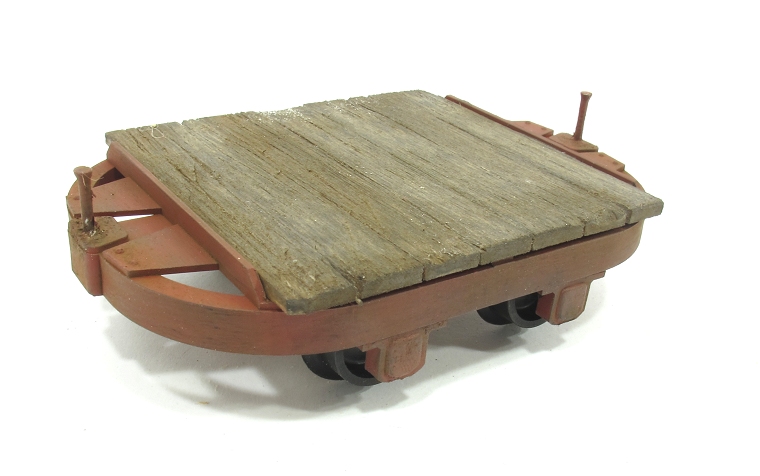14 August 2020
|
There can be very few garden scale modellers not familiar with the Hudson skip wagons produced in kit form by Binnie Engineering. In real life, the chassis found themselves under all sorts of different wagons. We take Binnie parts and create some useful flat wagons.

Our starting point is the tipper chassis kit. These models are for 45mm gauge lines, but a 32mm gauge version is also available. The chassis is moulded in ABS plastic, wheels and axleboxes are glass-filled nylon. These are removed form their sprue with nippers or a heavy craft knife, and any leftover stubs cleaned up with an abrasive stick.

Rust seems to have been the colour of choice for many prototypes - eventually, if not when new. A quick spray of red-oxide car primer followed by some dry-brushing with Humbrol No.70 enamel gives us a basic colour. Axles are fitted into the axleboxes and then pushed into the slots in the chassis. A touch of superglue ensures they stay put.

Using a back-to-back gauge (ours is from Regner but others are available) the wheels need to be set the correct distance apart. A drop of superglue on the back of each where it joins the axle will be sufficient to hold them.

The top is cut from 3/32" thick basswood sheet. Planks 10mm wide are scribed with a heavy craft knife - be careful not to go all the way through. The wear and tear effects are created by dragging saws along the grain lines, attacking the wood with small screwdrivers and even knives, finishing up with a light sanding, again, along the grain with a very coarse abrasive. We don't want any smooth wood!

The wooden bed is glued to the wagon with all-purpose glue. It needs a little weight left on top while drying.

A couple of coats of EDM Models "Weathered Wood" is brushed on. This is a stain rather than a paint and will turn the wood the correct silvery colour the prototype will go when bleached in the sun and rain. More coats make the woodwork more silver, but let it dry and the full effect isn't seen until then. It's easy to add another coat, but you can't take it off again.

The finishing touch is to dust the model with Humbrol Dark Earth weathering powder. There's no need to seal this in place, the powder will work its way into the basswood and stay put. However, if you leave your rolling stock out in the rain, a few coats of matt varnish will stop the wood going soggy.








